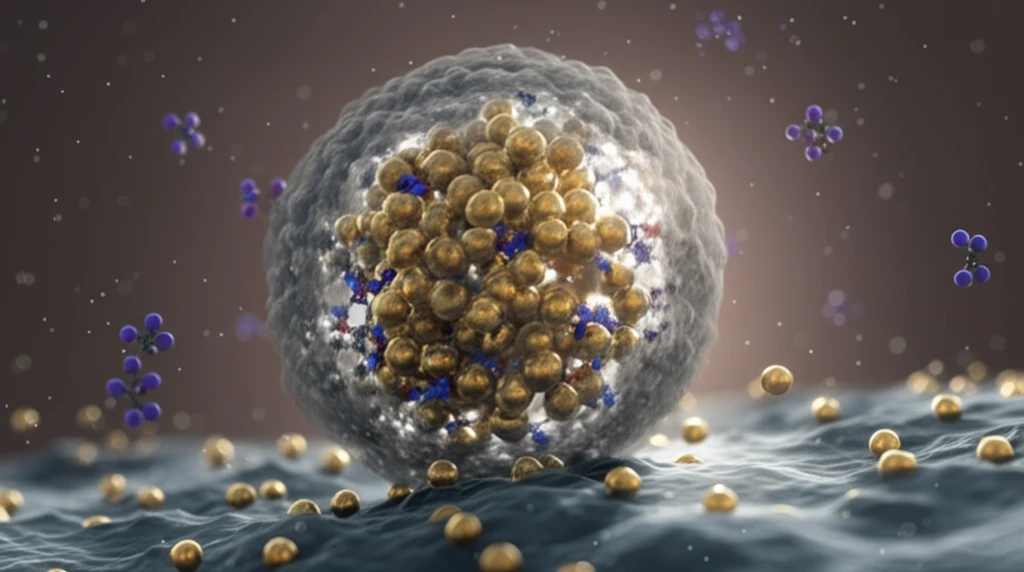
Unlock Nature's Secrets: How Artificial Enzymes are Revolutionizing Chemical Reactions
"Discover the groundbreaking research on mesoporous-encapsulated chiral nanogold and its potential to mimic natural enzymes for enantioselective reactions."
Natural enzymes are nature's catalysts, driving a myriad of biochemical reactions with incredible efficiency and specificity. They're the unsung heroes behind everything from digesting food to synthesizing complex molecules in our bodies. However, these biological workhorses aren't without their limitations. They can be fragile, easily disrupted by changes in temperature or pH, and often difficult to produce and purify in large quantities.
For years, scientists have been striving to create artificial enzymes that can match or even surpass the capabilities of their natural counterparts. The goal? To develop robust, cost-effective catalysts that can be tailored to specific industrial needs. These artificial enzymes, also known as nanozymes, hold immense promise for revolutionizing fields like pharmaceuticals, environmental remediation, and sustainable chemistry.
Now, a groundbreaking study has unveiled a novel approach to designing artificial enzymes. Researchers have successfully created a mesoporous-encapsulated chiral nanogold catalyst that mimics the stereoselectivity of natural enzymes. This innovative nanozyme demonstrates enhanced control over chemical reactions, opening new doors for precise and efficient synthesis.
The Science Behind the Breakthrough

The research team, led by Xiaogang Qu and Jinsong Ren, drew inspiration from the way natural enzymes utilize chiral amino acids to achieve stereospecificity. Chirality, or handedness, is a fundamental property of molecules that can have a profound impact on their biological activity. Many pharmaceuticals, for example, have one form that is therapeutic and another that is toxic. Controlling the stereochemistry of a reaction is, therefore, critical in many applications.
- Enhanced Stability: The mesoporous silica matrix protects the AuNPs from harsh environmental conditions.
- Stereoselectivity: Chiral cysteine molecules ensure that the nanozyme preferentially interacts with one enantiomer of the substrate.
- High Activity: Gold nanoparticles provide a highly active catalytic center.
- Reusability: The nanozyme can be easily recovered and reused for multiple reaction cycles.
The Future of Artificial Enzymes
This research represents a significant step forward in the development of artificial enzymes. By combining the unique properties of nanomaterials with the principles of biomimicry, scientists are creating powerful catalysts that can address some of the most pressing challenges in chemistry and beyond. From synthesizing life-saving drugs to cleaning up environmental pollutants, the possibilities are endless. As researchers continue to refine and optimize these artificial enzymes, we can expect to see even more exciting breakthroughs in the years to come. The era of designer catalysts is just beginning, and the potential impact on our world is immense.
